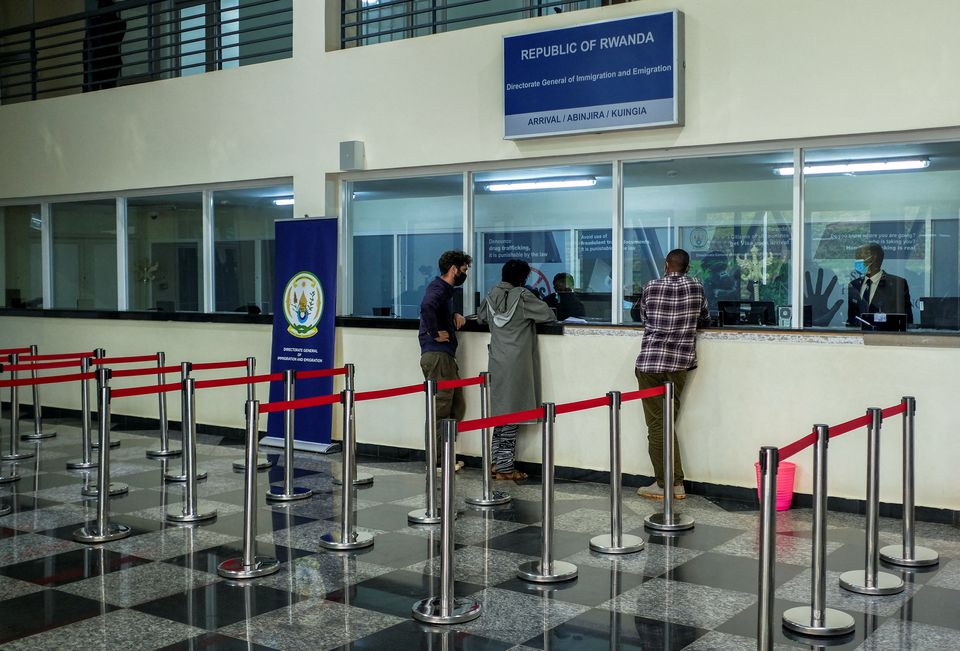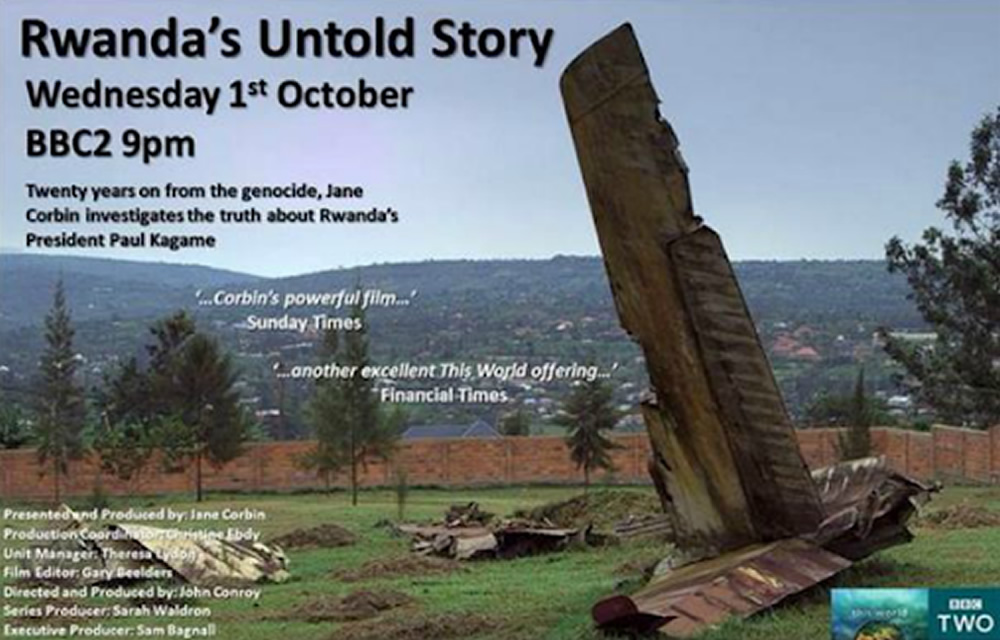ows of human skulls sit in glass cases near the red brick Catholic church here. Some are cracked in half; holes are punched in others. Hundreds of arm and leg bones lie nearby. To the left is a table of tools: rusty shovels, hoes, pipes, and a machete — the weapons of genocide.
Down the hill 10 miles (15 kilometers), thousands of Rwandans gathered under spittles of rain to watch the arrival of a small flame, symbolic fire traveling the country as Rwanda prepares to mark 20 years since ethnic Hutu extremists killed neighbors, friends and family during a three-month rampage of violence aimed at ethnic Tutsis and some moderate Hutus.
Rwanda puts the death toll at 1,000,050. Rwandan Foreign Minister Louise Mushikiwabo, speaking at a memorial event in London this week, called the genocide “the most brutally efficient killing spree in human history.”
At the flame ceremony in nearby Kirehe on Thursday, Theopiste Mukanoheli told the crowd how as an 18-year-old she watched her neighbor dig a 10-foot hole, a grave to cram bodies in. She was inside Nyarubuye Catholic Church when attackers threw in grenades, killing hundreds. Most of her close family died there, she said.
Mike Nkuzumuwami, who helps look after the rebuilt red-brick church, says 35,000 people died in his hilltop community, a sea of green where tens of thousands of banana trees grow. He notes that one positive change the genocide has brought about is a near erasure of the Hutu-Tutsi divide, a principle directive of the Rwandan government, which wants Rwandans to see themselves as Rwandan, not an ethnic tribe.
“After the killings no one has called me a Tutsi, and those Hutus involved in the genocide regret what they have done,” the 45-year-old said.
School groups visit the church, mass grave and museum of death. Near the skulls and bones are tables of dusty brown clothes, sandals, slippers and shoes. The younger generation does not understand the genocide, Nkumuwami said, and Rwanda’s aging population doesn’t want them to repeat it.
As Nkuzumuwami spoke, 12-year-old Nikeyimana Obadia lingered nearby, eager to interact with visitors. The curious boy is growing up in a land of stick and mud homes, where children eat cassava and beans and are tasked with filling plastic jugs at the community watering hole. His family speaks of the genocide at times. He knows his grandfather died in it.
“This is very bad. I hope everyone doesn’t do this because it’s easy to destroy life,” he said in a student’s English.
At the Kwibuka 20 ceremony — a Rwandan word meaning remember — thousands of eyes gazed upward to watch a slickly-produced film showing the lesser scenes of genocide horror. A voice in English says the killing spree was a planned political campaign that came from an ideology called Hutu Power. Tutsis, the video says, were meant to be exterminated.
Nsengiyomva Apollinaise, a local government official, says the flame ceremony that has traveled the country and will make its way to the capital, Kigali, on April 7, helps remind the country how far it has come. The video shows newer, happier scenes, too: economic prosperity and the calm face of President Paul Kagame.
“This is something that happens every year, an event to help each Rwandan personally remember what happened, and examine the causes,” said Apollinaise, who said his parents and siblings died in the genocide. “And also to see the path to move forward on.”
———
On the Internet:

